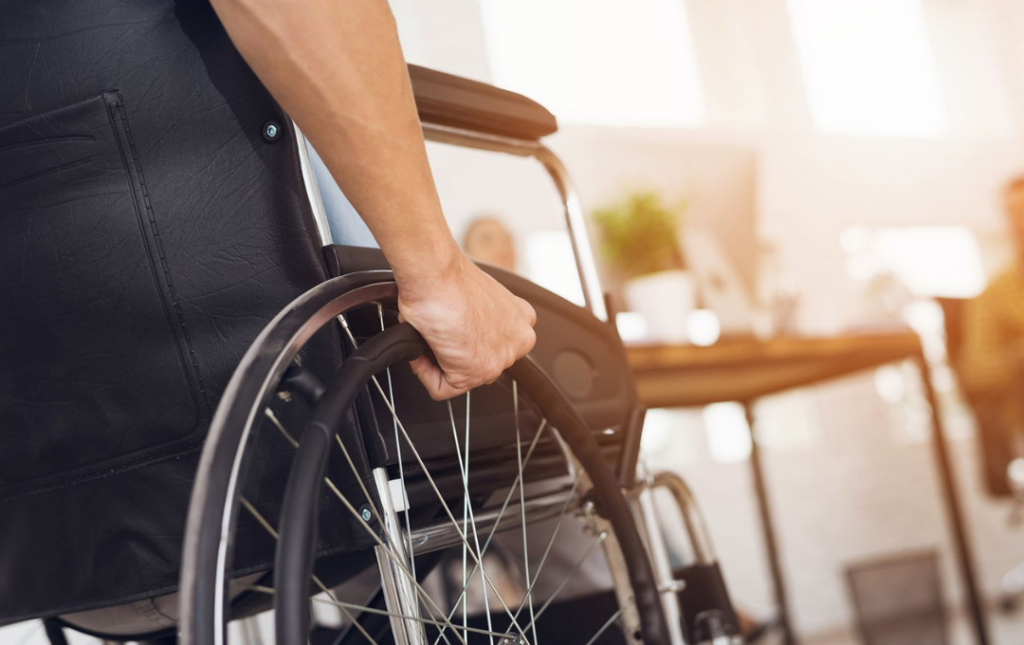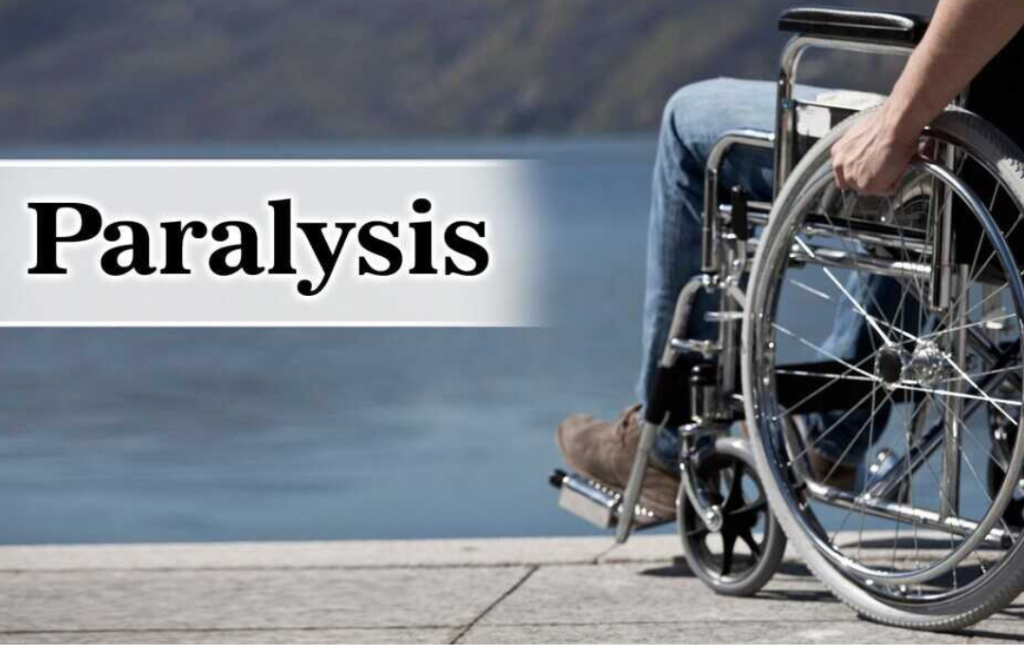Paralysis is a debilitating condition that affects millions of people worldwide. It is characterized by the loss of muscle function and sensation in certain parts of the body due to damage or dysfunction in the nervous system. This blog will explore the various causes, paralysis symptoms, and treatment options available, shedding light on this complex and challenging condition.
Causes of Paralysis
Paralysis can result from a wide range of factors, each affecting different parts of the nervous system. Some of the common causes include:
a) Traumatic Injuries: Severe accidents or falls can lead to paralysis, particularly if they result in damage to the spinal cord or brain. The impact can disrupt the nerve pathways, causing loss of motor function and sensation in the affected areas.
b) Stroke: Strokes, whether ischemic (caused by a blocked blood vessel) or hemorrhagic (caused by a ruptured blood vessel), can lead to paralysis. A stroke occurs when blood flow to the brain is interrupted, resulting in brain cell damage and functional impairments.
c) Neurological Disorders: Various neurological conditions can cause paralysis. Neurological disorders causing paralysis include multiple sclerosis, cerebral palsy, and amyotrophic lateral sclerosis (ALS) affect nerve cells and their connections, leading to muscle weakness and paralysis.
d) Spinal Cord Diseases: Infections, tumors, and inflammation affecting the spinal cord can disrupt nerve signals and result in paralysis. Conditions like spinal cord compression can compress nerve roots and cause paralysis in specific areas.
e) Autoimmune Diseases: Some autoimmune disorders, such as Guillain-Barré syndrome, cause the immune system to attack the nerves, leading to temporary or permanent paralysis.
f) Genetic Factors: Certain genetic conditions, like muscular dystrophy, can cause muscle weakness and paralysis due to inherited mutations affecting muscle function.
g) Infections: Viral and bacterial infections, such as polio, can lead to paralysis. In the case of polio, the virus affects the motor neurons in the spinal cord, causing muscle weakness and paralysis.
h) Toxins: Exposure to certain toxins, heavy metals, or chemicals can damage nerves and lead to paralysis.
i) Vascular Conditions: Atherosclerosis and other vascular diseases can restrict blood flow to the brain or spinal cord, causing strokes and paralysis.
j) Tumors: Benign or malignant tumors in the brain or spinal cord can put pressure on nerves, leading to paralysis.

Paralysis Symptoms to Focus On
The paralysis symptoms vary depending on the location and extent of nerve damage. Common symptoms include:
a) Loss of Movement: One of the primary paralysis symptoms is the inability to move the affected body parts voluntarily. The muscles in the paralyzed area become weak or unresponsive, leading to limited or no mobility.
b) Loss of Sensation: Along with the loss of movement, individuals with paralysis may experience a reduced or complete lack of sensation in the affected area. This can include a decreased ability to feel touch, temperature, and pain.
c) Muscle Spasms: Paralyzed muscles may exhibit involuntary contractions or spasms. These spasms can cause discomfort and may vary in intensity and frequency.
d) Bowel and Bladder Issues: Paralysis can affect the autonomic nervous system, which controls involuntary bodily functions, such as bowel and bladder control. As a result, individuals may experience difficulties in managing their bowel and bladder movements.
e) Changes in Sexual Function: Depending on the location and extent of paralysis, individuals may experience changes in sexual function, including difficulties with arousal, sensation, and performance.
f) Difficulty Breathing: In cases where paralysis affects the muscles involved in breathing, such as the diaphragm, individuals may experience breathing difficulties and require ventilatory support.
g) Muscle Atrophy: Over time, paralyzed muscles may weaken and shrink due to lack of use, leading to muscle atrophy. This can further exacerbate the loss of movement and contribute to joint stiffness.
h) Contractures: Prolonged immobility of paralyzed limbs can result in contractures, where the muscles and connective tissues become permanently shortened, limiting the range of motion.
i) Pressure Sores: Individuals with paralysis who are unable to change positions frequently may develop pressure sores (bedsores) due to prolonged pressure on specific areas of the skin.
j) Emotional Impact: Paralysis can have a profound emotional impact on individuals and their loved ones. Feelings of frustration, depression, anxiety, and a sense of loss of independence are common emotional responses to the condition.
Diagnosis
Paralysis diagnosis involves a comprehensive assessment of the individual’s medical history, physical examination, and various imaging tests. MRI scans and CT scans help identify any structural abnormalities in the brain or spinal cord. Electromyography (EMG) is used to evaluate the electrical activity of muscles and nerves, aiding in determining the severity and location of nerve damage.
Treatment Options for Paralysis
1. Physical Therapy: Physical therapy plays a crucial role in paralysis treatment in Bangalore. It focuses on improving muscle strength, flexibility, and coordination to enhance mobility and independence.
2. Occupational Therapy: Occupational therapists help individuals with paralysis learn skills and techniques to manage daily activities and maintain their independence.
3. Medications: Depending on the cause of paralysis, medications may be prescribed to manage pain, reduce inflammation, or address underlying conditions.
4. Assistive Devices: Mobility aids such as wheelchairs, braces, and walkers can improve mobility and enable paralyzed individuals to navigate their surroundings with greater ease.
5. Surgery: In some cases, surgical interventions may be necessary to address spinal cord compression, remove tumors, or stabilize fractured vertebrae.
6. Nerve Stimulation: Techniques like functional electrical stimulation (FES) can be employed to activate paralyzed muscles and improve function.
7. Stem Cell Therapy: Research is ongoing in the use of stem cells to regenerate damaged nerve tissue and potentially restore function.
8. Psychological Support: Paralysis can have a significant emotional impact. Counseling and support groups can help individuals cope with the challenges they face.
Conclusion
Paralysis is a life-altering condition that demands comprehensive medical care and emotional support. Understanding its causes, paralysis symptoms, and treatment options is crucial for individuals living with paralysis, their families, and their caregivers. Early intervention, a multidisciplinary approach to paralysis treatment at home, and ongoing research advancements offer hope for improving the quality of life for those affected by paralysis.
We are India’s first comprehensive continuum care provider. We provide multidisciplinary out of hospital care to acute and post-acute and chronically ill patients at our critical care facilities and your home.


